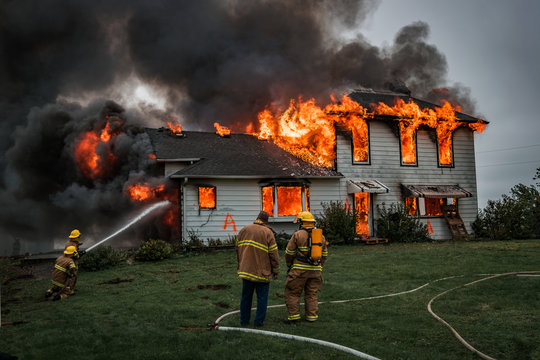The Top 8 Homeowner’s Insurance Vocabulary Words
Homeowner’s insurance is an investment every homeowner should make for the safety of their home. Insurance provides coverage when your home is damaged, whether from a fire or a fallen tree.
But navigating homeowner’s insurance can be challenging. While insurance policies are meant to give you peace of mind, many vocab words in your policy will leave you feeling more confused than peaceful.
Rescue My Roof has been working with homeowners for over a decade, helping them navigate their homeowner’s insurance to get the best home coverage. Today, we’ll help you learn all the words you need to know to get the most from your homeowner’s insurance.
This article will go over keywords you will see in your homeowner’s insurance policy. Ultimately, you’ll walk away empowered with the knowledge you need to navigate your policy with ease.
8 Homeowner’s Insurance Terms
Homeowner’s insurance can be intense and confusing. Here are some of the key terms and vocab explained:
1. Premiums

Homeowners insurance premiums are the regular payments you make to your insurance company in exchange for coverage that protects your home, its contents, and the liability associated with homeownership. These premiums are typically paid annually or semi-annually, but some insurers offer monthly payment options.
Here are some key points to understand about homeowners insurance premiums:
Factors Influencing Premiums
Several factors influence the cost of homeowners insurance premiums, including:
- Location: The location of your home plays a significant role in determining premiums. Homes in areas prone to natural disasters, like hurricanes or wildfires, may have higher premiums.
- Home Value: The value of your home affects your premium. More expensive homes typically have higher premiums.
- Coverage Amount: The level of coverage you choose, including the dwelling coverage (structure), personal property coverage, and liability coverage, impacts your premium. Higher coverage limits result in higher premiums.
- Deductible: The deductible is the amount you pay out of pocket before your insurance kicks in. Choosing a higher deductible can lower your premium but means you’ll pay more if you file a claim.
- Home Characteristics: Specific features of your home, such as the age of the roof, the presence of a swimming pool, or the type of heating system, can influence your premium.
- Claim History: A history of frequent or expensive insurance claims can result in higher premiums.
Discounts
Insurance companies often offer discounts that can help reduce your premiums. Common discounts include bundling home and auto insurance, installing safety features (e.g., security systems or smoke detectors), and having a good claims history.
Policy Renewal
Homeowner’s insurance policies typically renew annually. When your policy is up for renewal, your insurer may reassess your premium based on changes in your situation or coverage needs.
2. Deductible

A homeowner’s insurance deductible is the amount of money you, as the policyholder, are responsible for paying out of pocket before your insurance company begins to cover the costs of a covered loss or claim.
In other words, it’s the portion of an insurance claim you agree to absorb before your insurer pays the remaining amount up to the policy’s coverage limits.
Here are some key points to understand about homeowner’s insurance deductibles:
Types of Deductibles
There are typically two types of deductibles in homeowner’s insurance:
- Fixed Dollar Amount: This is a specific dollar amount that you agree to pay for each covered claim. For example, if your policy has a $1,000 deductible, and you file a covered claim for $5,000 in damages, you would pay the first $1,000, and the insurance company would cover the remaining $4,000.
- Percentage-based Deductible: Some policies use a deductible based on a percentage of your home’s insured value. For instance, if your home is insured for $300,000 and you have a 2% deductible, your out-of-pocket cost for a covered claim would be $6,000 (2% of $300,000), regardless of the total claim amount.
Choosing a Deductible
When you purchase homeowner’s insurance, you typically have the option to choose your deductible amount. The amount you select can affect your insurance premium. Higher deductibles generally result in lower premiums, while lower deductibles lead to higher premiums. Choosing a deductible that aligns with your budget and risk tolerance is essential.
Exceptions
It’s important to note that deductibles usually apply to specific claims, such as damage to your home’s structure or personal property. They may not apply to all types of claims, like personal liability claims, where the deductible doesn’t typically come into play.
3. Exclusions
Homeowner’s insurance exclusions are specific situations or types of damage not covered by a standard homeowner’s insurance policy. These exclusions are outlined in the policy contract and define the limits of coverage, clarifying what events or circumstances will not trigger a payout from the insurance company. Understanding these exclusions is crucial for homeowners to ensure they have the right coverage and are aware of potential gaps in protection.
Homeowner’s insurance exclusions include:
- Flood Damage: Standard homeowner’s insurance policies typically do not cover damage caused by flooding. Separate flood insurance is usually required for this type of coverage. Flood insurance is often offered through the National Flood Insurance Program (NFIP) or private insurers.
- Earthquake Damage: Earthquake damage is generally excluded from standard policies. Homeowners in earthquake-prone areas may need to purchase a separate earthquake insurance policy to be adequately protected.
- Sinkholes: Damage from sinkholes, which can occur due to geological factors, is usually not covered by standard homeowner’s insurance. Sinkhole coverage may be available in some regions but often requires an additional policy or endorsement.
- Maintenance and Wear and Tear: Homeowner’s insurance is designed to cover sudden and unexpected events. It does not typically cover damage from normal wear and tear, lack of maintenance, or neglect. For example, if a roof deteriorates over time and begins to leak due to aging, it may not be covered.
- Sewer Backup: While some policies offer coverage for sewer backup or water damage from sump pump failure as an optional endorsement, it may not be included in the standard policy.
- Termites and Pests: Damage caused by pests like termites, rodents, or insects is usually excluded. Preventative measures and repairs for pest damage are typically the homeowner’s responsibility.
4. Named Perils

Named perils are a type of insurance policy that specifies the particular risks or perils for which your property is covered. In a named perils policy, coverage is explicitly outlined, listing the specific events, situations, or hazards that will trigger compensation from the insurance company if they cause damage to your property or belongings. This type of policy contrasts an “all-risk” policy, which covers a broader range of perils unless explicitly excluded.
Here are some common named perils that may be covered under a homeowner’s insurance policy:
- Fire and Smoke: Damage caused by fire and smoke, including wildfires, is typically covered under named perils policies.
- Windstorm or Hail: This includes damage caused by windstorms, tornadoes, hurricanes, and hailstorms.
- Explosions: Damage resulting from explosions, such as those caused by gas leaks or other accidents.
- Theft and Vandalism: Loss or damage due to theft, burglary, or vandalism is often covered.
- Falling Objects: Damage caused by falling objects, such as trees or branches, is typically covered.
- Weight of Ice and Snow: Damage caused by the weight of ice, snow, or sleet accumulating on your roof or structures is commonly included.
- Aircraft or Vehicles: Damage caused by aircraft, including drones or vehicles crashing into your property, is typically covered.
It’s important to note that the specific named perils covered can vary between insurance companies and policies. Additionally, homeowners can often choose from different levels of coverage, ranging from basic named perils coverage to more comprehensive coverage that resembles an “all-risk” policy with fewer exclusions.
5. Open Perils
Open perils coverage, also known as an “all-risk” or “comprehensive” policy, is a type of insurance that provides more comprehensive protection compared to “named perils” coverage.
With open perils coverage, your policy assumes that your property is protected against all risks unless a specific peril is explicitly excluded in the policy language. This means that the burden of proof is on the insurance company to show that a particular cause of loss is excluded rather than on the homeowner to demonstrate that it’s covered.
Here are some key features of homeowner’s insurance with open perils coverage:
Broader Coverage
Open perils coverage typically offers protection against a broader range of perils, including those not listed in the policy. Commonly excluded perils in named perils policies, such as accidental damage or mysterious disappearance, are often covered under open perils policies.
Exclusions List
While open perils policies provide more comprehensive protection, they still include a list of exclusions—specific situations or perils that are not covered. These exclusions are usually outlined in the policy document and often include things like flood damage, earthquake damage, and intentional acts.
Exceptions to Exclusions
Some open perils policies may include exceptions to the exclusions. For example, while flood damage may be excluded, there might be an exception if the flooding results from a sudden and accidental burst pipe rather than a natural flood.
6. Depreciation

Homeowners insurance depreciation refers to the reduction in the value of your insured property over time due to wear and tear, age, and obsolescence.
When you make a claim for damaged or lost property, your insurance company may consider depreciation when determining your compensation. This concept is particularly relevant for items like personal belongings and the structural components of your home.
When a claim is filed for damaged or stolen property, the insurance company often calculates the compensation based on the item’s actual cash value (ACV). ACV considers the item’s original cost, age, and condition at the time of the loss. Depreciation is a key factor in determining ACV.
To assess depreciation, the insurance company considers factors such as the item’s age, wear and tear, and market value. The older an item is, the more it has depreciated. For example, a five-year-old television is typically worth less than a brand-new one.
It’s important to review your homeowner’s insurance policy to understand how depreciation is handled and whether you have options for coverage that consider replacement cost instead of actual cash value. Additionally, maintaining an inventory of your belongings, along with receipts and documentation of their value, can help streamline the claims process and ensure you receive fair compensation in the event of a loss.
7. Declarations Page
A homeowner’s insurance declaration page is a crucial document that summarizes key information about your homeowner’s insurance policy. It is typically one of the first pages of your insurance policy documents, and it offers a quick reference point for understanding the coverage, limits, and other essential details of your policy.
If you have any additional endorsements or riders that modify or extend your coverage, they will be listed on the declaration page. These could include coverage for high-value items or specific perils not covered in the standard policy.
Additionally, the declaration page may include information about your mortgagee or lienholder if you have a mortgage on your property. This entity is interested in your property and may be listed as a payee on claim checks.
While the declaration page summarizes your coverage, reviewing the full policy documents is essential to understand any exclusions, conditions, or specific terms that may apply to your coverage.
8. Endorsements & Amendments
Homeowners insurance endorsements and amendments allow homeowners to customize their insurance policies to suit their needs and circumstances better.
While the standard homeowner’s insurance policy provides a baseline level of coverage, endorsements and amendments offer the flexibility to add or modify coverage options beyond what’s included in the standard policy. Here’s a closer look at endorsements and amendments:
Endorsements
- Additional Coverage: Endorsements are add-ons to your homeowner’s insurance policy that provide additional coverage for specific items or perils. For example, you can purchase an endorsement to cover high-value items like jewelry, fine art, or collectibles that exceed the standard policy limits.
- Specific Peril Coverage: Some endorsements offer coverage for perils not included in the standard policy. For instance, if you live in an area prone to earthquakes, you can purchase an earthquake endorsement to protect your home from earthquake-related damage.
- Customized Coverage: Endorsements allow homeowners to tailor their coverage to meet their unique needs. You can choose endorsements based on your property’s characteristics, location, or specific concerns.
- Personal Liability: You can enhance your personal liability coverage with endorsements. For example, an umbrella liability endorsement provides additional liability protection beyond the limits of your standard policy.
Amendments (Riders)
- Policy Modifications: Amendments, or riders, are formal changes or modifications to your insurance policy. These can include changes to coverage limits, deductibles, or policy terms.
- Specific Changes: Common amendments may include adjustments to your dwelling coverage limit due to home renovations or changes in your property’s value. You may also modify your deductible or the coverage term.
- Terms and Conditions: Amendments can address specific terms and conditions related to your policy. For example, if you want to clarify the conditions under which a specific type of loss is covered, you might request an amendment to the policy language.
- Policy Exclusions: Amendments can also remove or add policy exclusions. For instance, you may request an amendment to exclude a specific type of peril if you believe another policy adequately covers it.
Both endorsements and amendments require approval from your insurance company, and they may come with an additional cost, which will be reflected in your premium. It’s essential to work closely with your insurance agent or broker when considering these modifications to ensure that you have the right coverage in place and understand how the changes will affect your policy.
Learn More About Homeowner’s Insurance

Homeowner’s insurance is meant to protect you – but often, homeowners don’t know enough about insurance policies to get the most out of them.
We’ve covered the essential vocabulary words, but now it’s time to learn what your policies will and won’t cover and the next steps to take when they don’t. Read “Top 5 Roofing Insurance Questions Answered” and “Insurance Denies Your Roof Claim: What’s Next?”
Do you need a roof replacement or repairs in southeastern Wisconsin? Rescue My Roof is here to help. Contact us today to get a free estimate.


